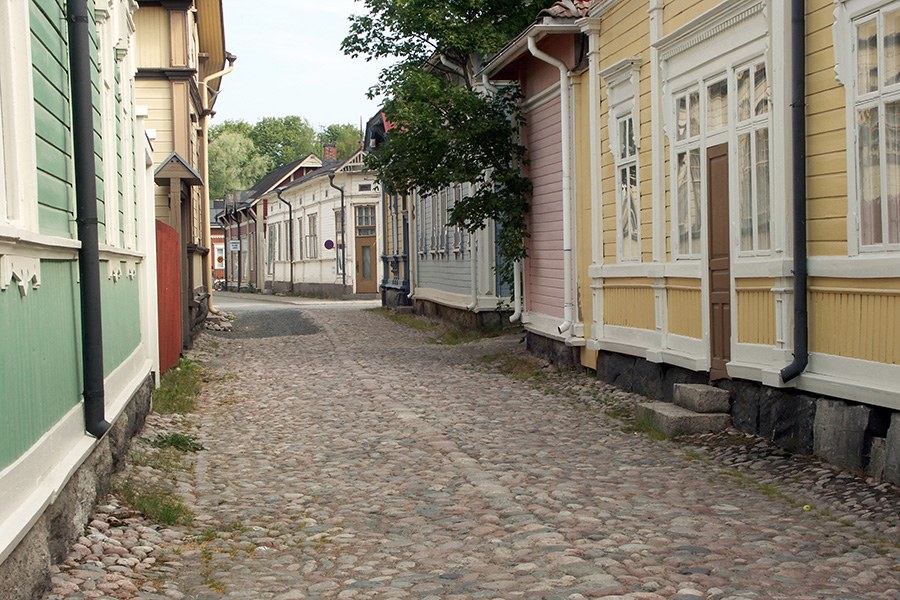Modern architectural heritage may meet the fate of wooden towns

Iida Kalakoski, a researcher and university instructor in architectural history at Tampere University, says that the problems of modern building heritage are much the same as those that hit the wooden towns of the past, which were compromised by citing social problems, fire hazards, repair costs, and inefficient zoning. Currently, the focus is on such aspects as indoor air, sick buildings, high-risk structures, and problem neighbourhoods.
According to Kalakoski, we cannot afford to make the same mistakes that were made from the 1960s to the 1980s when entire wooden neighbourhoods were razed to the ground and replaced by residential buildings. She regrets that only fifty years later, some of those sites are again threatened by demolition and replacement.
“It is difficult to recognise the value of relatively young built heritage and it seems that only a sufficient passage of time allows a reassessment,” Kalakoski says.

The canonisation of wooden towns took a long time
Preserving such wooden towns as Porvoo and Rauma seems self-evident now. However, this was not the case in the 1960s and 1970s when, for example, the wooden districts of Amuri and Tammela were destroyed in Tampere. At that time, preserving the wooden houses was considered impossible. Even architects and preservationists did not widely recognise the value of the buildings before the wave of demolitions began.
Together with Satu Huuhka and Olli-Paavo Koponen, Kalakoski has studied the canonisation of Finnish wooden towns and their development as cultural heritage sites. The transformation took decades.
Why do we understand the value of wooden towns now, but not fifty or sixty years ago?
“There were many wooden towns then because that was the basic type of the Finnish town. There was no need to have a concept for a wooden town because all towns were built of wood in the Nordic countries. People admired stone buildings, but few could afford them,” Kalakoski points out. Wood, on the other hand, was an everyday material that was easy to work with and cheap to use in buildings during the pre-industrial period.
In 1926, the Finnish term for wooden town was reportedly mentioned in literature for the first time, but it was not until the 1960s that the towns began to be referred to as places worthy of protection. By that time, however, wooden buildings had begun to be demolished because of rural-urban migration and urban growth.
Wooden houses had long been neglected and were thought to be in poor condition. It was also difficult to get the public interested in their preservation. The idea of conservation began to develop only through the writings of professionals.
The Venice Charter for the Conservation and Restoration of Monuments and Sites from 1964 was a landmark document on architectural conservation, which slowly began to draw attention to the fact that built environments can only be meaningful when they are intact.
“The wooden town is a Nordic phenomenon but how it came to be encompassed by conservation is part of a wider international movement,” Kalakoski mentions.
The concept of architectural heritage was broadened to include groups of buildings and urban spaces instead of just monuments. In addition to single monumental buildings, the value of buildings such as outbuildings as part of a whole began to be appreciated.
Social considerations were more important than architectural heritage
In the early discussions of the 1960s and 1970s, the reasons for protecting wooden towns were more social than cultural and historical.
“This was related to the spirit of the times, which was quite political. Conservation was raised by the young radicals, some of whom are emeritus and emerita professors of architectural heritage now. At that time, the social perspective probably offered more effective arguments than those that appealed to cultural and heritage aspects,” Kalakoski explains.
Wooden houses were, for example, rental accommodation provided by factories as homes for their workers. The young radicals of architecture thought that demolishing the buildings would also destroy the communities created around them and that the old residents would no longer afford to live in the new more expensive homes.
Kalakoski thinks that the immaturity of the conservation discourse also played a role because arguments related to architectural heritage could not be found and were not perceived as convincing.
“The situation is a bit similar now that ecological considerations are used to support the conservation discourse. Purely conservation-based arguments are perhaps perceived as so insubstantial that even professionals do not rely on them alone. It used to be natural to rely on social aspects, now it is ecology that is depended on,” she says.
Kalakoski emphasises that mixing the ecological and cultural perspectives is not insincere.
“It reflects the values of our time in the same way as the social hues of the 1970s’ architectural preservation discourse. What is also common is that cultural and historical values still do not seem to be enough on their own,” Kalakoski points out.
Text: Heikki Laurinolli





